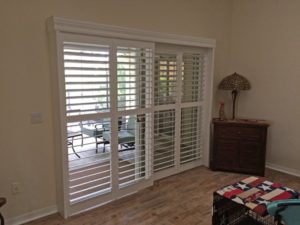
 Getting new interior window shutters for your home is an excellent way to transform both the look and feel of your residence. Many people are swapping out their old blinds and curtains for different types of indoor shutters. The Villages residents should know that many people notice right away when a home is fitted with new window shutters, but the interesting part about this is, many people will notice different things about the window shutters, and how they change the look and feel of a room or the entire home. Here are some of the characteristics of window shutters that people notice first about indoor window shutters.
Getting new interior window shutters for your home is an excellent way to transform both the look and feel of your residence. Many people are swapping out their old blinds and curtains for different types of indoor shutters. The Villages residents should know that many people notice right away when a home is fitted with new window shutters, but the interesting part about this is, many people will notice different things about the window shutters, and how they change the look and feel of a room or the entire home. Here are some of the characteristics of window shutters that people notice first about indoor window shutters.
The Materials of the Shutters
Typically, the first thing that people notice when looking at a home with indoor window shutters are visual, which tends to be the material used to make the indoor shutters. The villages residents should know that there are a few different materials that are common materials used to make window shutters. The most common materials used are composite materials, such as PVC or polyurethane. These are the ones that are a bright white material, but the other popular material used to make indoor window shutters are natural hardwoods ranging from oak to maple, and many other species of tree.
The Configuration of Window Shutters
Another common feature of indoor shutters that many people notice at first is the configuration of the indoor shutters. The Villages residents should know that not all window shutters look the same or operate in the same way. The most common type of window shutter configuration that can be found in homes are interior plantation shutters. These are the best all-around window shutters for homeowners, but not the only ones. For example, if you are someone who wants more privacy out of your window shutters, consider looking into café style window shutters that only allow for half viability. Another type of window shutter configuration are window shutters for sliding glass doors of the home.
*Disclaimer: The views expressed here are those of the authors and do not necessarily represent or reflect the views of Shutter Professionals*

